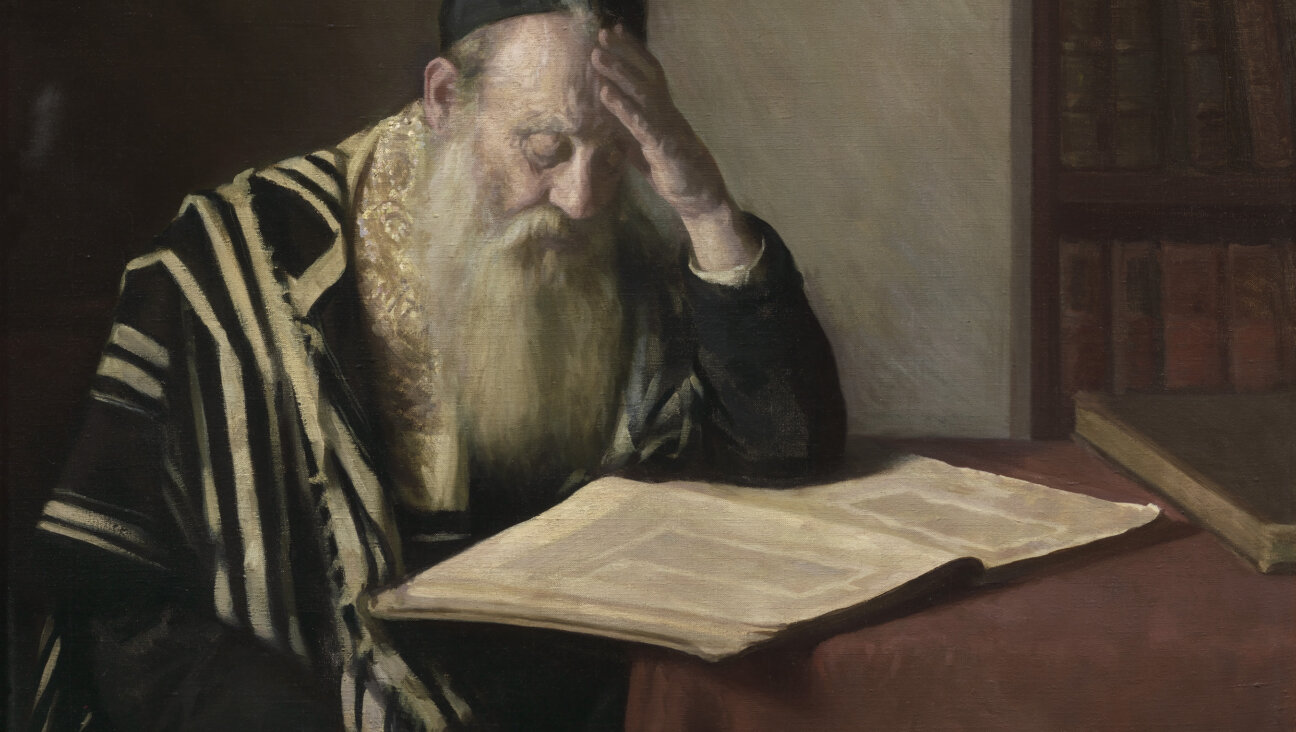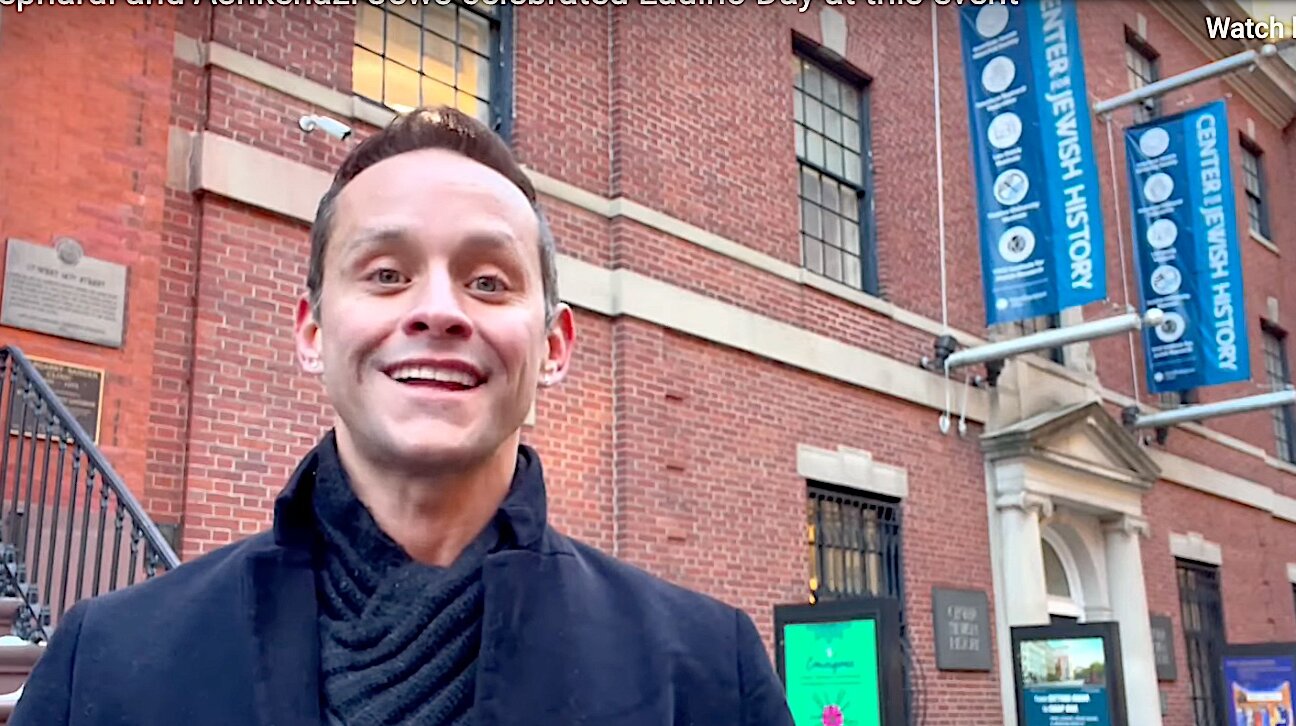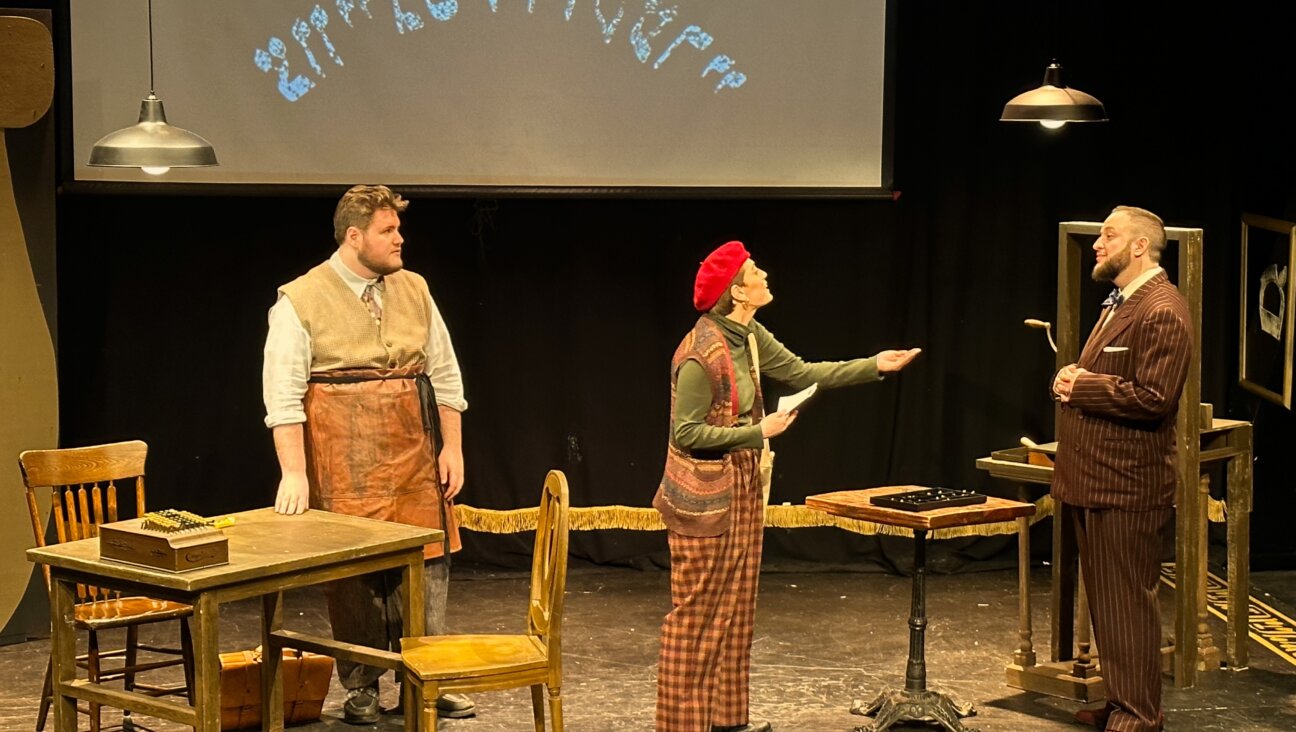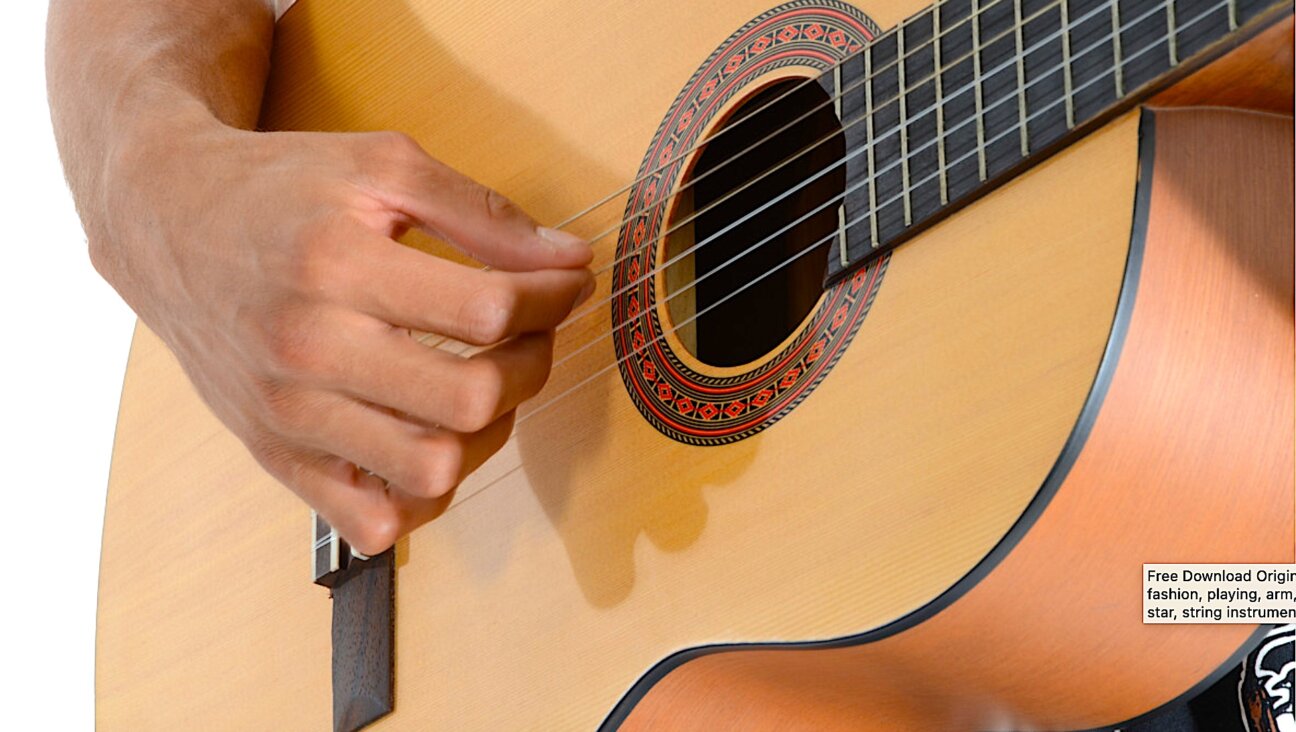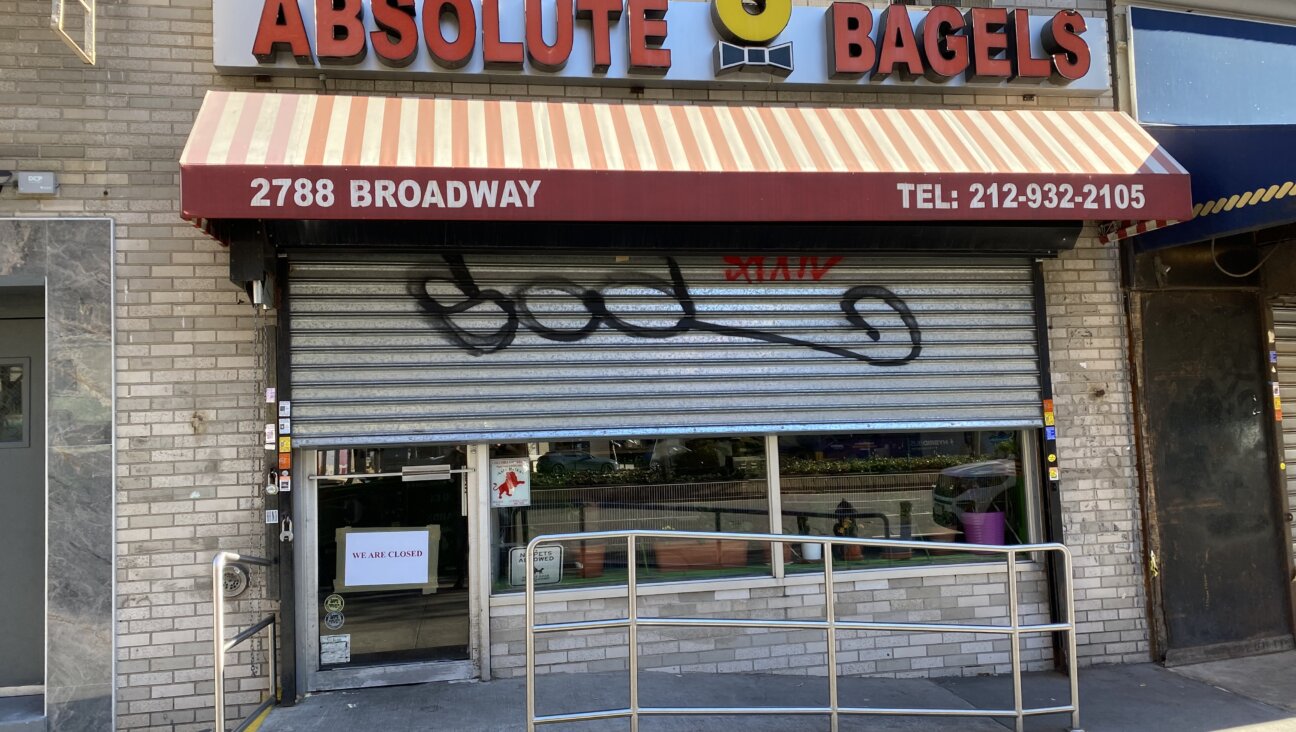Favorite Heirlooms: Bubbie’s challah cover with an upside down letter

Courtesy of Jacqueline Benefraim
My great-grandmother Chana Klein, whom we all called Bubbie, was a powerhouse at 4’10” and an accomplished Jewish cook who didn’t share recipes. When she was a widow, all the men in the morning minyan at my shul chased her, but she was faithful to her beloved husband who she met only once before her wedding. She was straight out of a Sholem Aleichem tale, but she was a real warm loving person who inspires me until today.
Bubbie immigrated to America from a shtetl near Odessa, Ukraine in 1910 at age 27 with four young children in tow, and when she was reunited with her husband who was already working in New York, she had a fifth child to care for and no time to learn English.
Fast forward 40 years to my parents’ wedding. It was 1950 and Bubbie Klein had still not learned to read English and did not have the money to buy a fancy present so she lovingly crocheted a khale dek, or challah cover for the young couple. There are many traditional patterns that feature the word for challah – חלה – in the pattern, but my mother didn’t read Hebrew at the time. So Bubbie found a pattern using “bread” instead of “challah” and diligently went to work. However, she somehow got the pattern turned around and the R was crocheted upside down. This error was caught before she completed the work, so she did another one with the R right side up.

Courtesy of Jacqueline Benefraim
My mother never knew about the flawed first piece and used the cloth every week on her challah tray for Shabbat and holidays throughout my childhood.
Another 25 years pass and Bubbie passes away at the age of 96. Sadly, this was after her hip snapped when she bent over to pick up a piece of dough she dropped while baking challah. I was then about to move into my first apartment so my grandmother told me if I cleaned out Bubbie’s kitchen and bedroom, I could take all of her plates and utensils to outfit my kitchen. While cleaning under Bubbie’s bed I found her sewing box, in which I found a bunched up skein of yarn with a crochet hook still in it. I unfurled the work in progress and to my astonishment saw the same design as the bread cloth we used every week, except that the letter R was upside down.
The crochet work was almost complete when someone must have pointed out to Bubbie that the “R” in bread was upside down. Even 25 years later I could feel Bubbie’s anger as she jabbed the hook into the skein and took out her frustration by winding all the loose yarn so tightly around the skein. I decided that I could use my mother’s khale dek as the pattern. I would complete the doily since Bubbie taught me to crochet (and did so in Yiddish which I didn’t even speak at the time).
Another 10 years go by. I was married and living in Los Angeles when I participated in a needlework show sponsored by the Pomegranate Guild of Judaic Needlework. There were similar khale deks on display, but none with the word “bread” since they were all in Hebrew. Several women commented that the error in the cloth made it too important to use unprotected, so I took my khale dek to a framer in Los Angeles and created a tray with handles with the needlework safe inside. I told my mother back in suburban Washington D.C. to do the same.
When my mother was at the framers, she ran into a friend, who noticed my mother’s cloth and mentioned that she had a very similar one made for her by her great aunt, but surprisingly, the “R” was upside down on hers as well. We concluded that these two elderly women who lived in different cities must have used the same pattern. Since we all remembered how Bubbie faithfully read the Forverts cover to cover, we all assumed that is where she found the pattern.
I now work as a librarian at American Jewish University, where I have incorporated both of Bubbie’s framed khale deks into an exhibit on Birkat Ha-Mazon, the Hebrew blessing after meals. I also learned through my work that I could read older issues of Forverts through the National Library of Israel’s Jewish Press in the USA portal. I checked the pertinent years, but I didn’t find the pattern.
Recently I heard Forward archivist Chana Pollack give a lecture to the Association of Jewish Libraries, where I learned that the Forverts did indeed publish patterns. I hope that one day someone will come across the pattern for this cherished heirloom which will show the “R” was upside down in the original pattern and that Bubbie didn’t make a careless error after all.
A message from our Publisher & CEO Rachel Fishman Feddersen

I hope you appreciated this article. Before you go, I’d like to ask you to please support the Forward’s award-winning, nonprofit journalism during this critical time.
At a time when other newsrooms are closing or cutting back, the Forward has removed its paywall and invested additional resources to report on the ground from Israel and around the U.S. on the impact of the war, rising antisemitism and polarized discourse.
Readers like you make it all possible. Support our work by becoming a Forward Member and connect with our journalism and your community.
— Rachel Fishman Feddersen, Publisher and CEO







